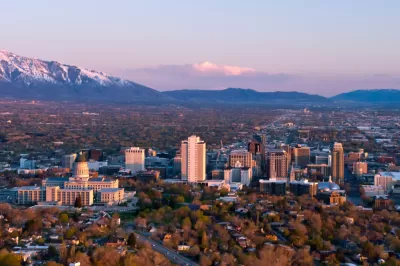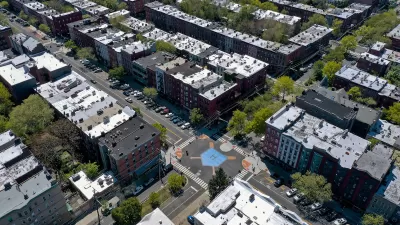After a 19-year hiatus, the city is restarting its traffic calming program to combat the growing pedestrian death crisis.

Almost two decades after Salt Lake City’s last traffic calming projects, a rise in pedestrian deaths has prompted the city to revive its traffic calming program. Jordan Miller details the city’s plan in an article for the Salt Lake Tribune.
A 2019 study assessed the city’s most dangerous roads and potential solutions for improving traffic safety. “The study’s final report identified 403.5 miles of roadway within Salt Lake City for possible improvements and divided those streets into 113 prioritized zones — based on crash data, speed data, demographics and community assets like schools.”
Program components include three versions of speed bumps, raised crosswalks to improve pedestrian visibility, pedestrian refuge islands, and roundabouts. Many of these treatments function best when combined: pedestrian refuge islands and raised crosswalks, for example, provide the most added safety when combined with other speed deflection measures.
See the source article for projected costs and more details on each type of project, the extent of which will depend on future funding.
FULL STORY: In Salt Lake City, here’s what kind of ‘traffic-calming’ projects could be coming to your street

Maui's Vacation Rental Debate Turns Ugly
Verbal attacks, misinformation campaigns and fistfights plague a high-stakes debate to convert thousands of vacation rentals into long-term housing.

Planetizen Federal Action Tracker
A weekly monitor of how Trump’s orders and actions are impacting planners and planning in America.

Chicago’s Ghost Rails
Just beneath the surface of the modern city lie the remnants of its expansive early 20th-century streetcar system.

Bend, Oregon Zoning Reforms Prioritize Small-Scale Housing
The city altered its zoning code to allow multi-family housing and eliminated parking mandates citywide.

Amtrak Cutting Jobs, Funding to High-Speed Rail
The agency plans to cut 10 percent of its workforce and has confirmed it will not fund new high-speed rail projects.

LA Denies Basic Services to Unhoused Residents
The city has repeatedly failed to respond to requests for trash pickup at encampment sites, and eliminated a program that provided mobile showers and toilets.
Urban Design for Planners 1: Software Tools
This six-course series explores essential urban design concepts using open source software and equips planners with the tools they need to participate fully in the urban design process.
Planning for Universal Design
Learn the tools for implementing Universal Design in planning regulations.
planning NEXT
Appalachian Highlands Housing Partners
Mpact (founded as Rail~Volution)
City of Camden Redevelopment Agency
City of Astoria
City of Portland
City of Laramie





























